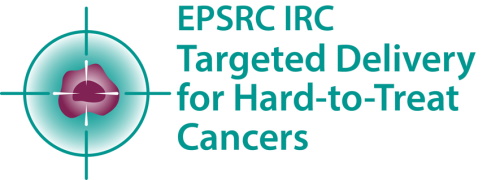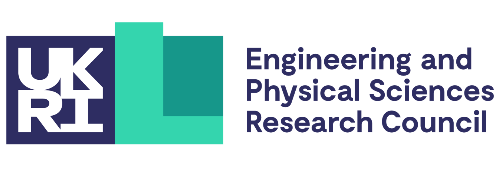
Metal-organic frameworks, known as MOFs, are one of the drug delivery technologies currently under development by the IRC. Professor David Fairén-Jiménez, lead of the Adsorption and Advanced Materials Lab at the University of Cambridge and IRC Investigator, reflects on his research and sets out the future promise of MOFs to target hard-to-treat cancers.
While I have been working on the development of MOFs as a platform technology for many years, joining the IRC marked a significant point of difference. Until then, the focus of my lab had been on cancer as a single disease, but the IRC brought together scientists working on a range of technologies to focus on three cancers – glioblastoma, pancreatic cancer and mesothelioma.
Reaching the current stage of development with MOFs is significant – if the data is positive, it will be fantastic news. Looking further ahead there is the possibility of integrating the IRC technologies – loading MOFs with hydrogel, for example, could enable delivery of a greater concentration of drugs to a tumour. We are only at the beginning of exploring the possibilities of integrating these technologies, but the approach could prove to be a game-changer Professor David Fairén-Jiménez, IRC Investigator
The engineering aim of the IRC is to develop drug delivery to increase cell-destroying drug concentration within the tumour itself while avoiding toxicity elsewhere. However, each of the cancers in sight of the IRC presents particular challenges that make them very hard to treat – and the outlook for patients is poor. In addition to being difficult to detect early and fully remove surgically (if possible), these cancers have endogenous barriers – natural defence mechanisms – which include the blood-brain barrier and tissue stroma, which drugs need to cross in order to reach the tumour. Pancreatic and mesothelioma tumours have fibrous outer layers making drug penetration problematic.
The technologies under development by the IRC include injectable hydrogels that can be loaded with drugs for direct application to the resection cavity in the brain following surgery, devices that can be implanted in the tumour area to overcome the significant hurdle of bypassing the blood-brain barrier, and MOFs.
MOFs comprise metallic clusters and organic linkers that can be constructed into one-, two- or three-dimensional structures with high pore volume. As high-capacity nanoparticular carriers with good biocompatibility and biodegradability, they are of interest to targeted drug delivery which is not served well by some current carriers that lack high-loading capacities and release drugs rapidly. Other features of MOFs include exceptionally high surface areas and adsorption capacities as well as tuneable properties that can be designed for specific applications and, impressively, controlled release of therapeutics. This brings the possibility of delivering sufficient quantities of drugs to the tumour location to effectively target cancer cells without causing toxicity elsewhere, avoiding the often-debilitating side effects of systemic delivery systems.
That said, many MOFs come with low mechanical and thermochemical stability, which we have worked to overcome. By coating the MOFs with a polyethylene glycol (PEG) chain, the MOFs are no longer unstable when suspended in a buffer solution. This is crucial because specific ions contained in these solutions are frequently found in pharmaceutical applications, and in the body, and can attack the metal centre of the MOF structure breaking down the network. Adding the coating to the MOFs also resulted in the slower release of drugs; useful when a disease requires delivery over a longer period of time. We have also recently been able to demonstrate the targeting ability, creating a MOF to deliver drugs into mitochondria, where cancers often begin, which is a very promising stepping-stone.
Despite success in formulating the MOFs, there remain a number of stages on the journey to clinic, and each stage brings a new set of challenges. Our lab-based data is promising but we now need to study the formulations of the MOFs under live conditions. The recent partnership between the IRC and the University of Liverpool, where expertise in using chick eggs to grow cancer cells as three-dimensional vascularised tumours – which can reduce or replace the use of mouse models – is established. We will send our agents to be evaluated by the University of Liverpool team who will use the egg model of, initially, mesothelioma to test how the drugs are delivered into the tumours, as well as their effects on the cancer and other cells. This initiative is part of the IRC’s ambition to speed up the journey to clinic and support the development of MOFs to better understand the biology behind the materials and how we can tune their properties to have better targeting abilities and efficacy against the cancer. We are also working on including antibodies on the external surface of the materials which will mark the next generation of MOFs.
The complexity of the engineering challenge involved in our work requires an interdisciplinary team – it is a critical part of the IRC programme and embedded in the structure of the group, including the clinicians who have the needs of the patient in mind and keep the research grounded. With these hard-to-treat cancers there is no single solution – they present many challenges and require multiple solutions, which is why the IRC is developing a number of technologies. Taking a technology to clinic requires a wide range of expertise, from material scientists and biotechnologists to clinicians and advanced manufacturing. Working collaboratively across disciplines enables the symbiosis of specialisms towards a shared goal and is critical to progress. It is important that pharma companies are part of the picture too, and the involvement of Astra Zeneca from the start of the IRC has certainly been beneficial.
Reaching the current stage of development with MOFs is significant – if the data is positive, it will be fantastic news. Looking further ahead there is the possibility of integrating the IRC technologies – loading MOFs with hydrogel, for example, could enable delivery of a greater concentration of drugs to a tumour. We are only at the beginning of exploring the possibilities of integrating these technologies, but the approach could prove to be a game-changer.


